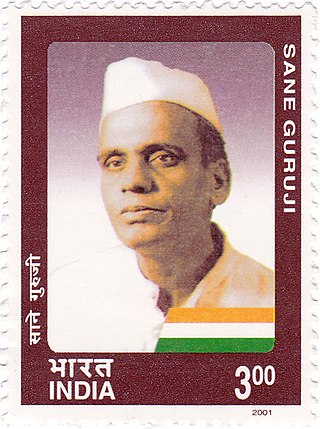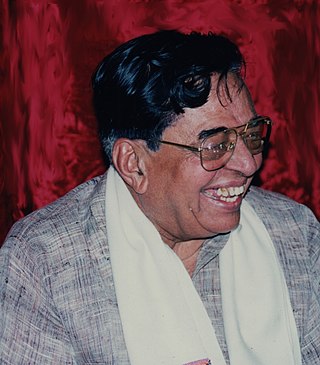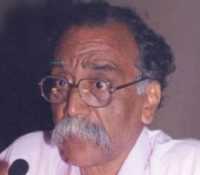
Marathi is a classical Indo-Aryan language predominantly spoken by Marathi people in the Indian state of Maharashtra and is also spoken in other states like in Goa, Karnataka, Tamil Nadu, Telangana, Gujarat, Madhya Pradesh, Chhattisgarh, and the territory of Dadra and Nagar Haveli and Daman and Diu. It is the official language of Maharashtra, and an additional official language in the state of Goa, where it is used for replies, when requests are received in Marathi. It is one of the 22 scheduled languages of India, with 83 million speakers as of 2011. Marathi ranks 13th in the list of languages with most native speakers in the world. Marathi has the third largest number of native speakers in India, after Hindi and Bengali. The language has some of the oldest literature of all modern Indian languages. The major dialects of Marathi are Standard Marathi and the Varhadi Marathi. Marathi was designated as a classical language by the Government of India in October 2024.
Marathi literature is the body of literature of Marathi, an Indo-Aryan language spoken mainly in the Indian state of Maharashtra and written in the Devanagari and Modi script.

Pralhad Keshav Atre, popularly known as Āchārya Atre, was a prominent Marathi writer, poet, educationist, founder–editor of Maratha, and above all a noted orator.

Pandurang Sadashiv Sane, also known as Sane Guruji by his students and followers, was a Marathi author, teacher, social activist and freedom fighter from Maharashtra, India. His literature was aimed at educating children. After Gandhi's assassination, he became very upset. He then died due to overdose of his sleeping pills.

Nutan Marathi Vidyalaya (NMV) is one of the oldest schools in Pune, Maharashtra, India. The school was founded by the Shikshan Prasarak Mandali, an educational charity, on 1 January 1883. The school has a secondary school section for students in grade five to ten and a junior college for students in grade eleven and twelve.

AcharyaDharmananda Damodar Kosambi was a prominent Indian Buddhist scholar and Pāli language expert. He was the father of the illustrious mathematician and prominent Marxist historian Damodar Dharmananda Kosambi.

Dattaram Maruti Mirasdar, popularly known by his initials was a Marathi writer and narrator principally of humorous stories.His stories were principally based on rural Maharashtra.The subtle and comic stories he wrote were well read.

Bhalchandra Vanaji Nemade is an Indian Marathi language writer, poet, critic and linguistic scholar. Beginning with his debut novel Kosala, Nemade brought new dimensions to the world of Marathi literature. This was followed by a tetralogy consisting of novels Bidhar, Hool, Jareela and Jhool. In 2013, Nemade published his magnum opus titled Hindu: Jagnyachi Samruddha Adgal which is regarded as his masterpiece. Nemade is a recipient of the Sahitya Akademi Award as well as the Jnanapith Award, the highest literary honour in India. In 2013, he was awarded the Padma Shri.

Vishnudas Bhave was the leading dramatist of Maharashtra, India and considered as pioneer of Marathi theatre. He was born in Sangli and he staged the first Marathi-language play Sita Swayamvar in Sangli in 1843. In this venture, Bhave was supported by the then king of the princely state of Sangli. After the success of the play Sita Swayamvar, Bhave staged plays on various other episodes of the Ramayana. He traveled with his troupes for the plays. He also ventured into puppet shows. Bhave died on 9 August 1901.
Tryambak Shankar Shejwalkar was an Indian historian and essayist.
Rao Bahadur Govind Sakharam Sardesai, popularly known as Riyasatkar Sardesai, was a historian from Bombay Presidency, India.
Madhav Julian was the pen name which Madhav Tryambak Patwardhan used in writing Marathi poetry.
Shrikrushna Keshav Kshirsagar (1901–1980) was a Marathi writer from Maharashtra, India.
Mahadevshastri Joshi was a Marathi writer.

Vishnushastri Chiplunkar was a Marathi writer, whose writings have had a decisive influence on modern Marathi prose style. He was the son of the writer and scholar Krushnashastri Chiplunkar.

Pandit Prasad Sawkar is an Indian vocalist, and scholar of Indian classical, semi-classical, and devotional music. He received prestigious Padma Shri award in the year 2006 for his work in music and Sangeet Natak

Shankar Kashinath Garge more popularly known as Natyachhatakar Diwakar was a Marathi writer whose mastery of the Natyachhata, a kind of dramatic monologue made him the only major Marathi writer to have used this literary form very successfully. He was born in Pune, Bombay Presidency.

Chandrashekhar Govind Agashe was an Indian industrialist and lawyer, best remembered as the founder of the Brihan Maharashtra Sugar Syndicate Ltd. He served as the managing agent of the company from its inception in 1934 till his death in 1956. He served as the President of the Bhor State Council from 1934 to 1948, having previously been the council's Vice President from 1933 to 1934, its Secretary from 1932 to 1933, and the Chief Justiciar of the Indian princely state itself from 1920 to 1932.












